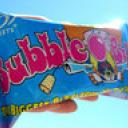Swell directions


Not sure what you mean. Buoys record the direction of the swell as it passes beneath it. The actual origin of the swell will depend on local bathymetry (which may influence the swell direction) and coastal alignment.
Are you trying to hindcast swell events by reverse engineering its directional properties against a great circle path, to determine its source? It can be done but there's a lot of complex mechanics in the mix. And, the data recorded by wave buoys is not always perfect (direction in particular) which could easily lead you on a wild goose chase.


It depends on the characteristics of the fetch generating each swell. I've seen some bloody impressive-looking trade swells from seemingly insignificant fetches, and conversely, there have been long range groundswells from intense but distant lows that have ended up being rather uninspiring.
The main difference between the two scenarios you mention is probably the consistency - trade swells (if they originate between Fiji longitudes and the mainland) are usually reasonably consistent with sometimes 6-10 waves in a set. E/SE groundswells from fetches near Cook Strait are much less consistent and often have less waves per set (unless the storm is bigger than usual/longer duration, broader area of core fetch maximum etc).
But there are always exceptions to every rule.. depends on the exact synoptic setup really.


My bad.. just slipped into auto-pilot (swells originating from Cook Strait are generally E/SE from a Sydney perspective, which is when I most commonly reference them). It's more SE in direction for Northern NSW/South East Qld.


I've tried to think of a bunch of semi realistic 'what if' kind of scenarios but it's too hard to write up. Basically, wave buoys can't determine great circle paths can they?